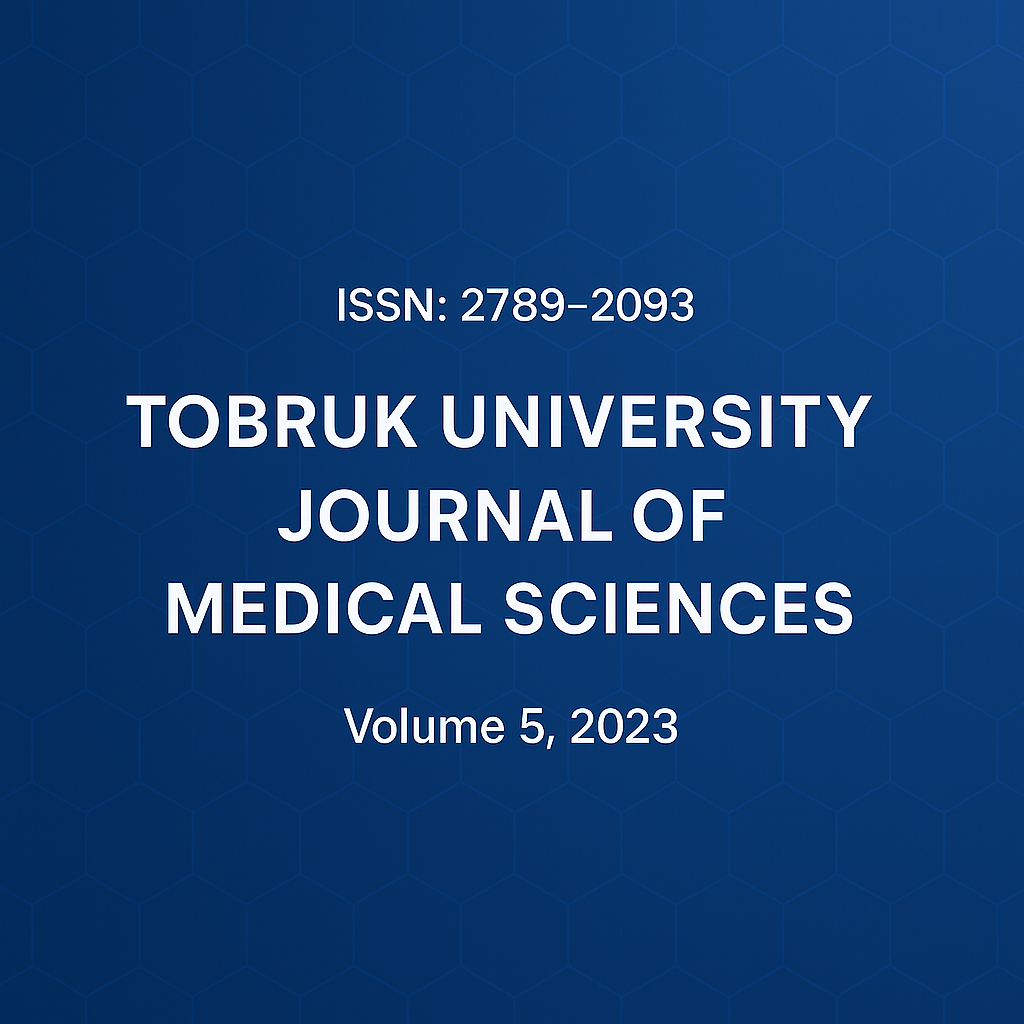Statistical Study on the Effect of Covid-19 on Patients with Chronic Diseases and Role of Radiological Diagnosis in Tobruk City
DOI:
https://doi.org/10.64516/rn06as88Keywords:
COVID-2019, Tobruk, chest X-ray, computed tomographyAbstract
COVID-19, a viral respiratory disease first identified in December 2019, rapidly emerged as a global public health threat. A deeper understanding of the epidemiology of SARS-CoV-2 and community risk perception is essential for developing effective, targeted interventions to reduce its spread and severity. This study aimed to examine the association between chronic diseases and severe outcomes among patients with COVID-19 infection, based on radiological diagnosis. A cross-sectional study was conducted among adult patients at Alhia Center, Tobruk, Libya, from 23 July to 30 August 2020. Logistic regression analyses (both univariable and multivariable) were performed to identify associations between chronic diseases and COVID-19 outcomes, with results presented as adjusted odds ratios (AOR) and 95% confidence intervals. A p-value of <0.05 was considered statistically significant. The study included 151 patients (82 females and 69 males). Diagnostic methods included clinical examination, radiographic imaging, swab tests, and rapid tests. A total of 23 deaths were recorded. This study contributes to the understanding of how pre-existing chronic conditions may influence the severity of COVID-19
References
1. World Health Organization. WHO announces COVID-19 outbreak a pandemic. 2020 Mar 30. Available from: http://www.euro.who.int/en/health-topics/health-emergencies/coronavirus-covid-19/news/news/2020/3/who-announces-covid-19-outbreak-a-pandemic
2. Moein ST, Hashemian SMR, Mansourafshar B, Tousi AK, Tabarsi P, Doty RL. Smell dysfunction: a biomarker for COVID-19. Int Forum Allergy Rhinol. 2020;10(8):944–50.
3. Zhu N, Zhang D, Wang W, Li X, Yang B, Song J, et al. A novel coronavirus from patients with pneumonia in China. N Engl J Med. 2020;382:727–33.
4. Ssentongo P, Ssentongo AE, Heilbrunn ES, Ba DM, Chinchilli VM. Association of cardiovascular disease and 10 other pre-existing comorbidities with COVID-19 mortality: a systematic review and meta-analysis. PLoS One. 2020;15(8):e0238215.
5. Zhou F, Yu T, Du R, et al. Clinical course and risk factors for mortality of adult inpatients with COVID-19 in Wuhan, China: a retrospective cohort study. Lancet. 2020;395(10229):1054–62.
6. Huang C, Wang Y, Li X, Ren L, Zhao J, Hu Y, et al. Clinical features of patients infected with 2019 novel coronavirus in Wuhan, China. Lancet. 2020;395(10223):497–506. doi:10.1016/s0140-6736(20)30183-5.
7. World Health Organization. Noncommunicable diseases. 2021. Available from: https://www.who.int/news-room/fact-sheets/detail/noncommunicable-diseases
8. Kang Y, Chen T, Mui D, Ferrari V, Jagasia D, Scherrer-Crosbie M, et al. Cardiovascular manifestations and treatment considerations in COVID-19. Heart. 2020;106(15):1132–41.
9. Hussain A, Bhowmik B, do Vale Moreira NC. COVID-19 and diabetes: knowledge in progress. Diabetes Res Clin Pract. 2020;162:108142.
10. Wan Y, Shang J, Graham R, Baric RS, Li F. Receptor recognition by the novel coronavirus from Wuhan: an analysis based on decade-long structural studies of SARS coronavirus. J Virol. 2020;94(7):e00127-20.
11. Yusuf S, Joseph P, Rangarajan S, Islam S, Mente A, Hystad P, et al. Modifiable risk factors, cardiovascular disease, and mortality in 155,722 individuals from 21 high-, middle- and low-income countries (PURE): a prospective cohort study. Lancet. 2020;395(10226):795–808.
12. Thomas Y, Francsco Z, Nazrul I, Cameron R, Clare LG, Claire AL. Obesity, chronic disease, age, and in-hospital mortality in patients with COVID-19: analysis of ISARIC clinical characterisation protocol UK cohort. BMC Infect Dis. 2021;21:717.
13. Wang W, Tang J, Wei F. Updated understanding of the outbreak of 2019 novel coronavirus (2019-nCoV) in Wuhan, China. J Med Virol. 2020;92:441–7.
14. Xu YH, Dong JH, An WM, et al. Clinical and computed tomographic imaging features of novel coronavirus pneumonia caused by SARS-CoV-2. J Infect. 2020;80:394–400.
15. Altuntas M, Yilmaz H, Guner AE. Evaluation of patients with COVID-19 diagnosis for chronic disease. Virol J. 2021;18:57.
16. Raptis CA, Hammer MM, Short RG, Shah A, Bhalla S, Bierhals AJ, et al. Chest CT and coronavirus disease (COVID-19): a critical review of the literature to date. AJR Am J Roentgenol. 2020;215:839–42. doi:10.2214/AJR.20.23202.
17. Wong HYF, Lam HYS, Fong AHT, Leung ST, Chin TWY, Lo CSY, et al. Frequency and distribution of chest radiographic findings in patients positive for COVID-19. Radiology. 2020;296:E72–8.
18. Manna S, Wruble J, Maron SZ, Toussie D, Voutsinas N, Finkelstein M, et al. COVID-19: a multimodality review of radiologic techniques, clinical utility, and imaging features. Radiol Cardiothorac Imaging. 2020;2:e20021.
19. Rubin GD, Haramati LB, Kanne JP, Schluger NW, Yim JJ, Anderson DJ, et al. The role of chest imaging in patient management during the COVID-19 pandemic: a multinational consensus statement from the Fleischner Society. Radiology. 2020;296:172–80. doi:10.1148/radiol.2020201365.
20. Choo JY, Lee KY, Yu A, Kim JH, Lee SH, Choi JW, et al. A comparison of digital tomosynthesis and chest radiography in evaluating airway lesions using computed tomography as a reference. Eur Radiol. 2016;26:3147–54.
Downloads
Published
Issue
Section
License
Copyright (c) 2021 Nagwa .R. Bochwal, Najah.A. Maziq, Ahmed S. A. Taher (Author)

This work is licensed under a Creative Commons Attribution 4.0 International License.











